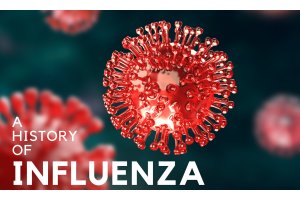Leprosy - Old Disease Makes a Comeback in Florida
Leprosy, or Hansen’s disease, is a chronic infectious disease that primarily affects the skin and peripheral nervous system by the acid-fast rod Mycobacterium leprae.(1) It is not known exactly how Hansen’s disease spreads between people. Scientists currently think it may happen when a person repeatedly breathes in the droplets containing the bacteria over many months.(2) Overall, the risk of getting Hansen’s disease is very low since 95% of all people have natural immunity to the disease. According to the National Hansen’s Disease Program, 159 new cases were reported in the United States in 2020 with Central Florida, in particular, accounting for one fifth of nationally reported cases.(3) Worldwide, there are over 200,000 cases per year, mainly occurring in India, Brazil, Indonesia, Nepal, and Bangladesh.(8)
In one case, a 54-year-old man sought treatment for painful erythematous rash, lesions on the distal extremities and progressed to involve trunk and face. The patient denied any travel, exposure to armadillos (a common zoonotic link) or connections with someone known to have leprosy or leprosy-endemic countries.(4) A previous study down by Sharma R. et.al. has shown that armadillos east of the Mississippi river rarely harbor the bacterium for leprosy.(5) “The fact that this patient had never traveled outside of the state of Florida was something that we just wanted to bring to light to those clinicians and physicians that are in the area,” said Dr. Rajiv Nathoo, a dermatologist and senior author on the study.(6) In some cases in Florida, the patients report contact with armadillos, but others to not. These are the only animals known to harbor the disease and have been known to spit when people get too close.(8,9)
Historically, leprosy is one of the most socially stigmatizing diseases, although early diagnosis and treatment often prevents complications. The cure rate is over 99% when appropriate antibiotics are administered, which are usually rifampacin, dapzone, and clofazamine. All current research and literature point to central Florida having an environmental reservoir of Mycobacterium leprae as a potential source of transmission.(4) Health care providers must be aware of the increasing incidence of cases of leprosy in Florida and have a high degree of suspicion for leprosy. The public must take precautions against direct contact with armadillos and indirect agricultural contact in armadillo-inhabited areas until the possible role of the environment in the transmission of leprosy is better understood.(7)







